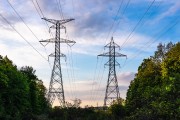The Alberta provincial government handed out another early Christmas present yesterday — more money for carbon capture and storage.
In the last couple of months, publicly funded subsidies have been announced for four major carbon capture and storage projects in Alberta. Here is the quick run down:
- $436 million for TransAlta Corporation to capture carbon emissions from its Keephills 3 plant
- $745 million to Shell for its Quest project
- $495 million to Enhance Energy Inc. and Northwest Upgrader for a 240 km pipeline to transport captured carbon emissions
- $285 million in hand-outs, this time for a Swan Hills Synfuels project to capture CO2 and use it for enhanced oil recovery.
With the latest announcement, the provincial government has emptied the $2 billion carbon capture and storage fund. According to government estimates, by 2015 the projects above are expected to achieve annual carbon dioxide emission reductions that are equivalent to taking approximately one-million vehicles, or about one-third of all registered vehicles in the province, off the road.
It is clear that carbon capture and storage has an important role to play in reducing greenhouse gas emissions in Canada. And in the early stages of technology development, it is understandable for governments to provide subsidies to companies to make investments in such technologies. Indeed, I don't think all subsidies are bad. It is essential, for example, that governments in Canada continue to subsidize a number of socially beneficial services, including health care and education. But where is the money for renewable energy and efficiency? Carbon capture and storage is only part of the solution to reducing carbon emissions. 
It seems renewable energy and energy efficiency developers will receive nothing more than coal in their stockings this year. To avoid dangerous climate change, governments in Canada need to commit to a massive scale-up of investments in renewable energy and energy efficiency. The benefits of doing so go beyond just reducing emissions. Economic growth, job creation and export opportunities go hand in hand with investments in renewable and efficiency. Matthew Bramley's report entitled Climate Leadership, Economic Prosperity shows Canada can reduce emissions and have economic growth.
Polluters Should Pay
We need to quickly get to a point where companies are shouldering the costs of ther pollution so that taxpayers are not footing the bill on their behalf. What we really need is a price on carbon that is high enough to provide incentives for companies to invest in carbon capture and other technologies for reducing/avoiding emissions without massive government hand-outs.









